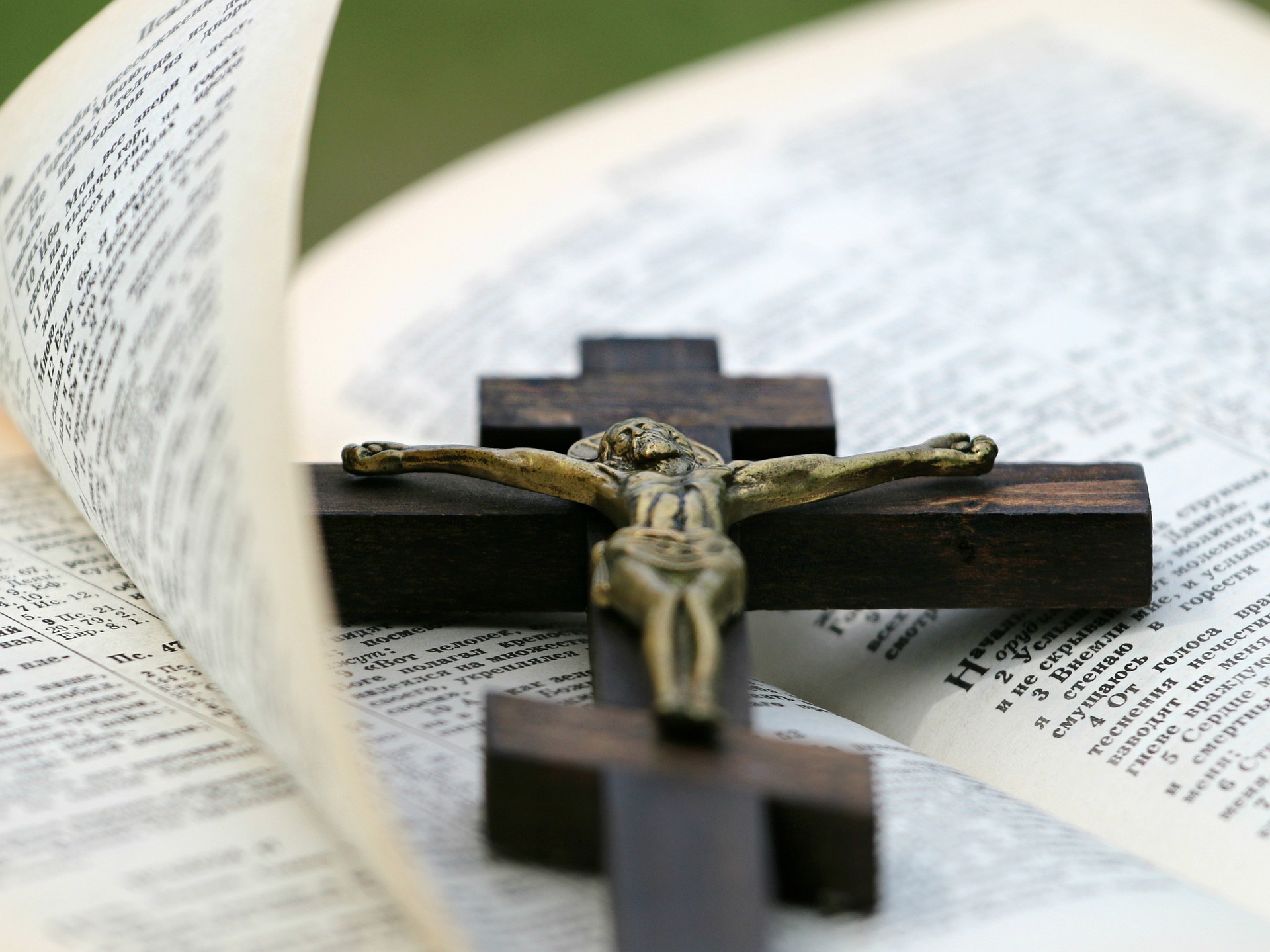 Submitted by Olivia on
Submitted by Olivia on

Image by klimkin on http://pixabay.com
The events that occurred surrounding an exorcism that took place in St. Louis, Missouri, in 1949 went on to inspire the book THE EXORCIST by William Peter Blatty and a film version a few years later. Blatty changed around the characters, as well as the location of the true events, but based it as closely as possible on the events that took place in real life. At the time that he wrote the book, Blatty did not have access to the so-called “priest’s diary” – a document that chronicled the events of the St. Louis exorcism – but he was able to interview Father William Bowdern, the Jesuit pastor who performed the real-life exorcism.
At Father Bowdern's request, Blatty fictionalized the events of the exorcism and to hide the identity of the young man who went through the ritual, he changed the possessed victim to a young girl and moved the entire sequence from St. Louis to Washington, D.C. The exorcist in the book, however, Father Merrin, was closely based on William Bowdern.
In 1971, Blatty's book appeared in print and became an instant bestseller. There was immediate talk of a film version and Blatty was hired to do the script. The book was loved by critics and readers alike, but the author struggled with the script, tossing away a number of re-writes of his original text before finally coming with a version that satisfied the director of the project, William Friedkin. Blatty had wanted Friedkin as the director because he was well-known for his documentary work and Blatty felt strongly that the story needed "somebody who could give the film a sense of reality." The resulting film was a solid financial success and is remembered today as one of the most terrifying films ever made.
The filming of THE EXORCIST was done over a nine-month period. The main set, a reproduction of the Georgetown home, was built in a warehouse in New York. During the filming, a number of curious incidents and accidents took place on the set and plagued those involved with the production. In addition, the budget of the film rose from $5 million to more than twice that amount. Obviously, any film production that lasts for more than a month or so will see its share of accidents and mishaps, but THE EXORCIST seems to have been particularly affected by unforeseeable calamities. Coincidence? Perhaps, but it left the cast and crew shaken.
The first incident occurred around 2:30 a.m. one Sunday morning when a fire broke out on the set. There was only one security guard at the Ceco 54th Street Studios when the McNeil house set caught fire and burned. The fire was the result of a bad electric circuit, but it shut down filming for six weeks while the set was constructed again from scratch. Ironically, as soon as the new set was ready, the sprinkler system broke down, causing an additional two-week delay.
Few of the actors in the film escaped personal troubles during the shoot. Just as Max Von Sydow (Father Merrin) touched down in New York to film his first scenes, his brother died unexpectedly in Sweden. Von Sydow himself later became very ill during the filming. Irish actor Jack MacGowran (Burke Dennings) died only one week after his character was killed by the demon in the movie. Jason Miller (Father Karras) was stunned when his young son, Jordan, was struck down on an empty beach by a motorcyclist who appeared out of nowhere. The boy almost died. Ellen Burstyn (Chris McNeill) wrenched her back badly during one scene when she was slapped by the possessed girl. The stunt went badly awry and she was laid up in bed for several weeks afterward, causing more delays in the filming.
In New York, one of the carpenters accidentally cut off his thumb on the set and one of the lighting technicians lost a toe. The location trip to Iraq was delayed from the spring, which is relatively cool, to July, the hottest part of the summer, when the temperature rose to 130 degrees and higher. Out of the eighteen-man crew that was sent there, Friedkin lost the services of nine of them, at one time or another, due to dysentery or sunstroke. To make matters worse, the bronze statue of the neo-Assyrian winged demon Pazazu, which was packed in a ten-foot crate, got lost in an air shipment from Los Angeles and ended up in Hong Kong, which caused another two-week delay.
"I don't know if it was a jinx, really," actress Ellen Burstyn later said. "But there were some really strange goings-on during the making of the film. We were dealing with some really heavy material and you don't fool around with that kind of material without it manifesting in some way. There were many deaths on the film. Linda's grandfather died, the assistant cameraman's wife had a baby that died, the man who refrigerated the set died, the janitor who took care of the building was shot and killed … I think overall there were nine deaths during the course of the film, which is an incredible amount… it was scary."
Things got so bad that William Friedkin took some drastic measures. Father Thomas Bermingham, S.J., from the Jesuit community at Fordham University, had been hired as a technical advisor for the film, along with Father John Nicola, who, while not a Jesuit, had been taught by Jesuit theologians at St. Mary of the Lake Seminary in Mundelein, Illinois. Friedkin came to Bermingham and asked him to exorcize the set. The priest was unable to perform an actual exorcism, but he did give a solemn blessing in a ceremony that was attended by everyone then on the set, from Max Von Sydow to the technicians and grips. "Nothing else happened on the set after the blessing,” Bermingham stated, "but around that time, there was a fire in the Jesuit residence set in Georgetown."
And while nothing else tragic occurred on the set, strange events and odd coincidences were reported during the post-production work on the film. "There were strange images and visions that showed up on film that were never planned," Friedkin later claimed. "There are double exposures in the little girl's face at the end of one reel that are unbelievable."
The film opened on December 26, 1973 to massive crowds. Within weeks of the first public screenings of the film, stories started to make the rounds that audience members were fainting and vomiting in the theaters. There were also reports of disturbing nightmares and reportedly, a number of theater ushers had to be placed under a doctor’s care, or quit their jobs, after experiencing successive showings of the movie. In numerous cities that were checked after THE EXORCIST had run for several weeks, reporters found that every major hospital had been forced to deal with patients who reported, after seeing the film, severe cases of vomiting and hallucinations. There were also reports of people being carried out of theaters in stretchers. Mere publicity stunts, or the real thing?
The film created a widespread interest in exorcism but the result of this was often questionable. Scores of disturbed people began showing up at churches with claims of being possessed, while their problems should have been attributed to mental illness instead. In addition, renegade priests and self-proclaimed holy men started billing themselves as "exorcists" and "demonologists," hoping to cash in on the popularity of the film and the widespread interest in the occult that followed its release.
Unfortunately, not much has changed when it comes to that kind of thing.
Rumors and half-truths have surrounded this film for years, including the most controversial one of all -- that actual demonic voices recorded during an exorcism were mixed into the soundtrack. Friedkin did admit that he was in the possession on a "cassette recording of an actual exorcism performed in Rome. It's in Italian. It involves the exorcism of a 14-year-old boy. I got the tape through the Jesuit Provincial of New York and on the tape are the sounds produced by this young man supposedly possessed."
While Friedkin never claims to have used the sounds in the film, he does claim that he emulated them on the soundtrack for the demon. It has been this rumor that has provoked angry claims that THE EXORCIST is somehow dangerous or evil. Some fundamentalists have claimed there is evil in the very celluloid of the film itself.
While such claims are unlikely, at best, there have been many people over the years who have felt that there are places -- and objects -- that continue to embody the very real evil that was expelled in St. Louis in 1949.
Troy Taylor
https://www.americanhauntingsink.com/was-the-exorcist-cursed
- 478 reads